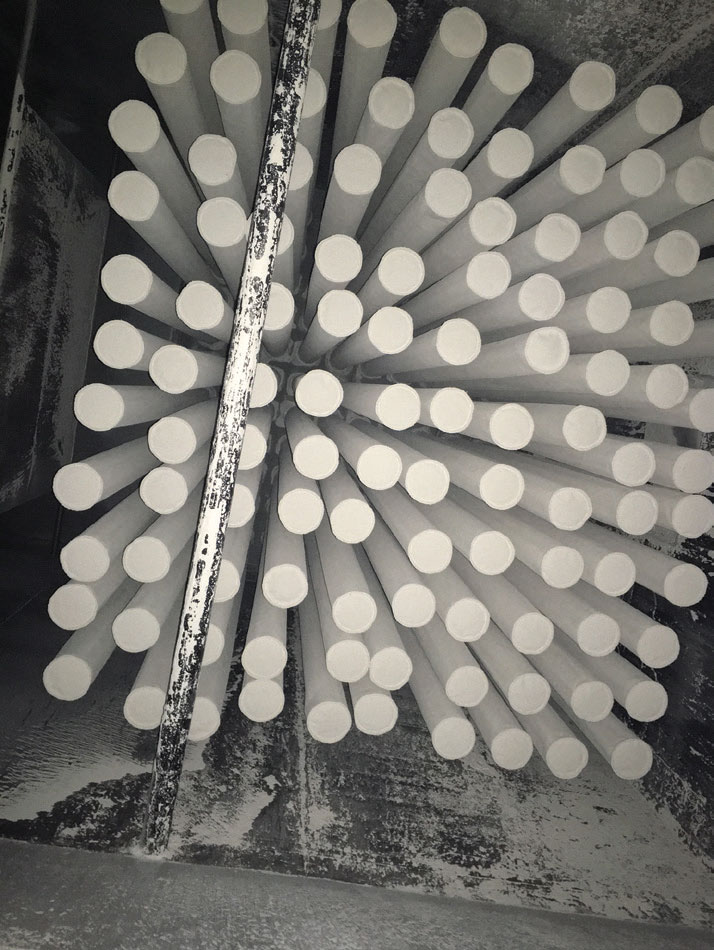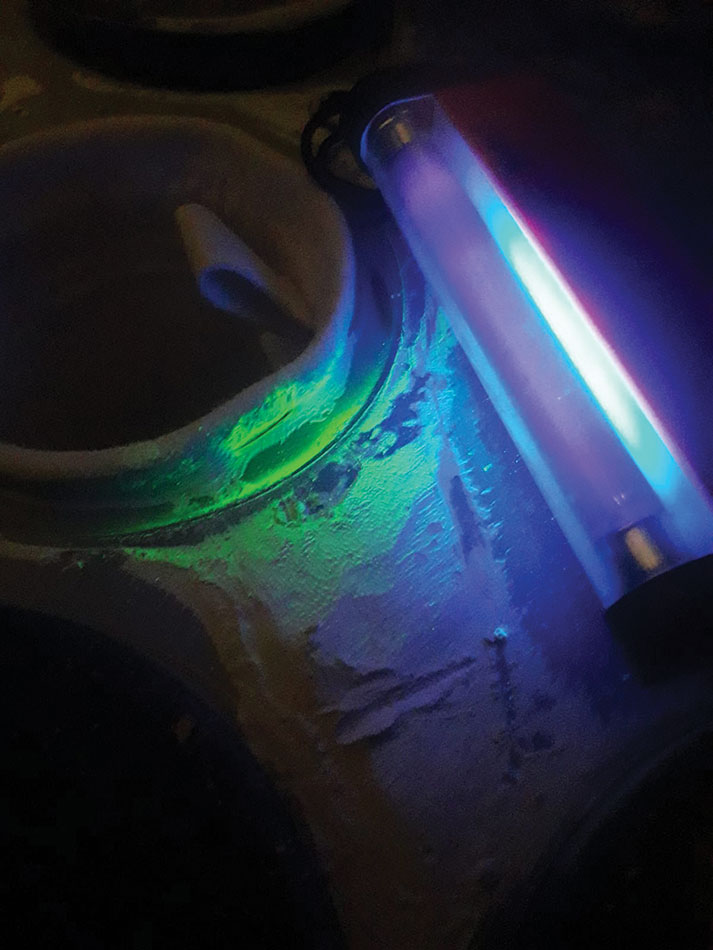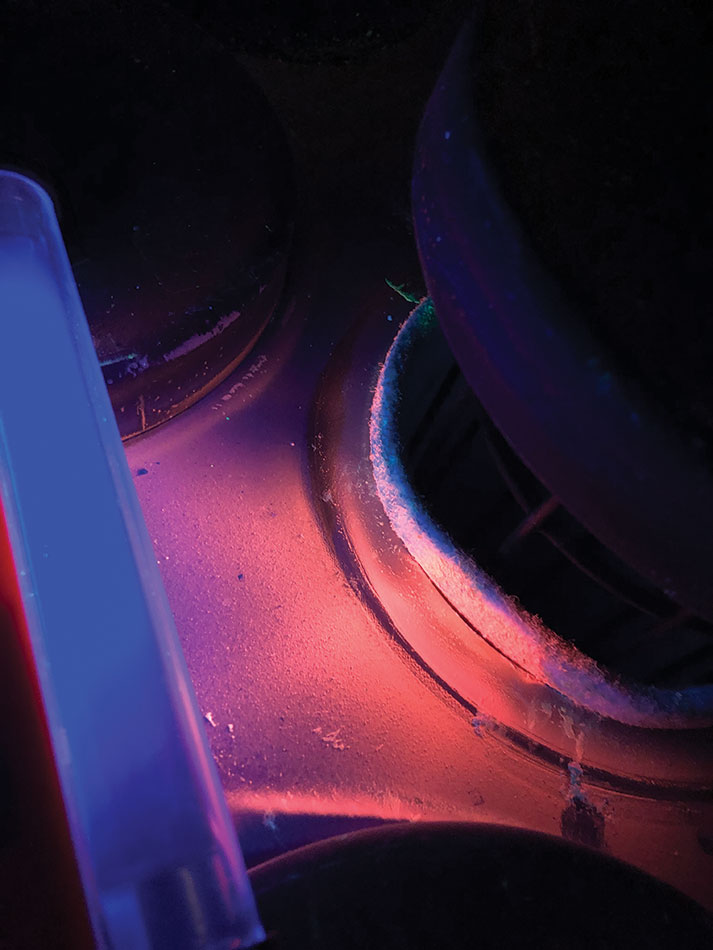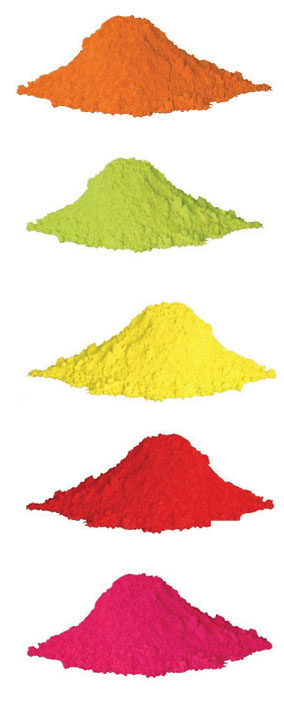Leak Detection Test for Baghouses
Hall Pyke is a leading provider of leak detection tests for baghouses in Ireland. Leakage from loose or damaged filter elements as well as corrosion damage to the housing is usually very difficult to detect in dust collection systems and requires a great deal of time and manpower. It is virtually impossible to detect defective welds with visual checks alone. For decades our product range has included fluorescent contrast powder especially for this purpose- leak detection tests for baghouses. Hall Pyke fluorescent contrast powder ensures fast and precise location of dust leaks in dust collection systems.
The fluorescent powder is introduced into the dirty side of the filter system. It then follows the path of least resistance collecting at the leaky points. After adding the fluorescent contrast powder, the portion which has leaked through can be illuminated with UV light, allowing dust leaks to be located precisely and quickly.
Maintenance program for your Baghouse
Any regular maintenance program for your Baghouse should include periodic Leak Testing. This maintenance task helps to detect compromised filters, exposes bag bleed-through, damaged tube sheets, or bad seals within your system that can lead to lower efficiency.
In a standard leak detection test for baghouses a tracer compound or powder is introduced into the system either from the dirty air plenum, or a collection point in the system. As the powder flows through the system, trace amounts are deposited in areas that have come into contact with the powder. Later on, a technician performs a visual inspection of the entire baghouse with a florescent light (i.e. black light) which causes the leak powder to glow. This enables the technician to detect any leaks in the filter bags, seals, tube sheets, or other areas within the system.
Hall Pyke can provide leak detection dust for customers who wish to carry out this maintenance test.


Different Colour Powders Available for Different Applications
Our leak detection powder comes in several different colours to facilitate its use in many different types of environments. Depending on the type of material that your Baghouse processes, it is vital that you choose the appropriate colour powder:
Pink – all industries
Orange – all industries except those where iron oxide is present
Green – aluminium, cement, and utility industries; good contrasting colour for pink and orange
Yellow – all industries except cement, lime, asphalt, utility, and cogeneration plants where sulphur is present in the dust
Others are useful for plants that test multiple times per year as they allow for easy distinction between each test.




Leak detection test for baghouses with fluorescent contrast powder
Injection Instructions
When doing a fluorescent contrast powder test on a unit that has been in use, turn off the bag cleaning mechanism leaving a dust cake on the bag to give a high pressure differential between the clean and dirty side of the bag. This will encourage fluorescent contrast powder to flow through any holes. Visually check the clean air plenum for heavy dust build-up and remove if possible so it won’t hide the fluorescent contrast powder that will mark the leakage points.
- Determine the amount of leak detection contrast powder needed by calculating the total filter bag cloth area to be treated. For every 100 m² filtration surface, 1,0-1,3 kg of leak detection contrast powder is required.
- Injection of fluorescent contrast powder
- Identify suitable injection ports or access doors on the inlet (dirty) side of the baghouse.
- A 5 – 8 cm diameter nipple located in inlet duct or hopper to compartment/collector is ideal. If no port is available opening an access door may be necessary for injection. Caution: Ensure that the access door can be safely held open during injection procedure.
- By connecting a hose to the injection port, the fluorescent contrast powder can be vacuumed from the container using the suction from the system. If an access door is used, the open container of fluorescent contrast powder needs to be poured into the open door and the suction will transfer the powder into the baghouse.
Note: If the baghouse operates under positive pressure, a material conveying blower or inductor is needed for injecting leak detection powder into the baghouse.
- Ensure the bag cleaning system is not operating during leak detection testing.
- Determine that the fan or system air flow can be shut down quickly once the leak detection powder is injected.
- Confirm that the clean-air side of the compartment can be isolated from excessive background light. This may require temporarily covering this area during ultraviolet light inspection process.
- Ensure availability of a filter mask (class 2 EN 149), safety glasses (EN 166), gloves (EN 388), coveralls and a high-intensity, portable ultraviolet light. Note: It is not recommended that the same technician performs the injection and visual leak checking due to possible contamination of boots and clothing with fluorescent powder during the injection process.
- Start the system fan and inject the fluorescent contrast powder.
- 1 minute after completing injection shutting down the system fan.
- Using a portable, high-intensity ultraviolet light, inspect the clean gas side for signs of leak detection powder compound that visibly identifies leaks, holes or structural cracks.
- Record failures based on the leak detection powder.
- Repair leaks and re-test filter bags in the baghouse using an alternate, fluorescent contrast powder colour to ensure all leaks have been identified and corrected.

